How AI is reshaping market infrastructure, from trade surveillance to risk management
This content was originally published by Traders
In financial markets, artificial intelligence (AI) and machine learning (ML) have moved swiftly from theoretical promise to practical reality. They are here, evolving rapidly, and fundamentally reshaping how traders operate day-to-day. Though no longer seen as emerging technologies, the use of AI in trading is still expanding, and the potential of AI and ML is far from fully realized. The real question is not whether these technologies can transform trading, but how quickly firms can access their full potential.
A recent report from EY reflects this shift: 90 percent of European financial services firms already use AI to some extent, with three-quarters of executives planning further adoption this year. Almost half of AI use cases focus on back-office functions, with limited applications in the front-office, despite its clear potential.
The possible applications of AI across capital markets are vast, with the capacity to deliver tangible outcomes. Namely, enhancing trade surveillance to detect market abuse better, streamlining pre-trade calculations to evaluate risk swiftly, and improving pricing models for more accurate risk management. AI is now a critical force that is reshaping how capital markets operate – and those who move fast will lead the future.
A proactive approach to trade surveillance
In trade surveillance, AI is shifting the role of compliance from reactive oversight to proactive insight. Traditional rules-based systems struggle to keep up with the complexity and volume of today’s markets, often generating high numbers of false positives while missing more subtle patterns of manipulation. AI models, in contrast, can analyze vast quantities of trade data in real time, then flag unusual behaviors and link patterns that suggest potential market abuse long before a human could spot these issues.
AI-powered tools not only reduce the noise for compliance teams, but surface richer, more actionable insights. AI can detect spoofing, layering, or cross-venue strategies that would likely be invisible to deterministic surveillance systems. Market players are increasingly adopting low-latency surveillance infrastructure powered by AI, designed to meet regulatory requirements, anticipate threats, and prevent reputational damage. As the complexity of trading strategies and scrutiny from regulators both intensify, AI offers a scalable path toward smarter, more resilient compliance.
A pre-trade shift
Pre-trade calculations are also a natural fit for AI, due to the technology’s ability to process large volumes of data at high speed. Sophisticated models can inform traders’ and algos’ decision-making and risk control, from calculating margins and supporting the selection of pre-execution counterparties in a Request for Quotation (RFQ), to deciding the optimal time to execute orders.
However, integrating AI into pre-trade calculations isn’t straightforward, as the models must be trained correctly. If pre-trade approximations are too low, firms could be exposed to insufficient coverage. Solutions such as CME’s SPAN 2 calculations and SPAN 2 approximations have sought to address these concerns, but there remain trade-offs between speed and accuracy.
Neural networks help overcome these challenges. They can be trained to deliver high-fidelity approximations while erring on the side of overshooting to mitigate risk.
By design, these tools continually absorb information to learn and improve continuously. Supervised learning techniques can be successfully integrated with algos to optimize the execution of large orders, reducing the complexity of configuration. This approach provides significant scale, allowing a single trader to manage greater volumes of large orders simultaneously with greater precision and efficiency.
Bringing precision to pricing models
AI also has a growing role in enhancing the accuracy of pricing financial instruments, particularly for modeling illiquid assets where data is scarce and traditional models fall short.
In implied volatility (IV) modeling, neural networks can find hidden patterns in data that standard models like the Surface Stochastic Volatility Inspired (SSVI) model tend to miss. This makes risk calculations more accurate, by reflecting real market behavior.
A hybrid approach, first proposed by Ackerer et al’s 2019 report, combines neural networks with the SSVI model, correcting the model’s deviations from market data while preserving SSVI’s key advantages like arbitrage-free conditions.
The capability of neural networks to process complex market data has gradually developed in recent years. In ION’s own empirical study, neural networks applied to 234 volatility surfaces across different dates consistently delivered a mean absolute error rate below 4 percent. This precision marks a major shift in what’s possible.
The role of AI and ML in pre- and post-trade processes is becoming foundational rather than experimental. As regulation evolves and market volatility increases, AI-powered models will play an even greater role in enhancing trade surveillance and compliance. Firms that embed these technologies effectively will be in the best possible position to manage risk, meet regulatory demands, and secure a competitive advantage.
Don't miss out
Subscribe to our blog to stay up to date on industry trends and technology innovations.


